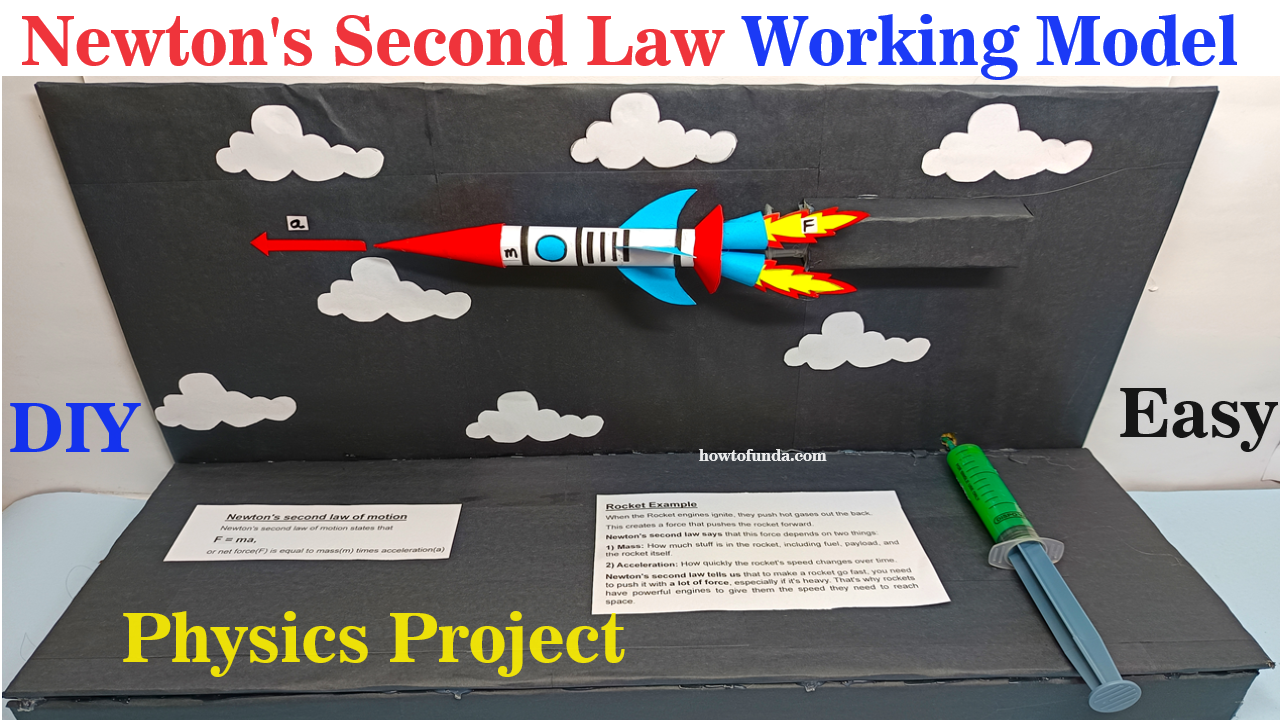Newton’s second law of motion
Newton’s second law of motion states that
F = ma,
or net force(F) is equal to mass(m) times acceleration(a)

Rocket Example
When the Rocket engines ignite, they push hot gases out the back.
This creates a force that pushes the rocket forward.
Newton’s second law says that this force depends on two things:
1) Mass: How much stuff is in the rocket, including fuel, payload, and the rocket itself.
2) Acceleration: How quickly the rocket’s speed changes over time.
Newton’s second law tells us that to make a rocket go fast, you need to push it with a lot of force, especially if it’s heavy. That’s why rockets have powerful engines to give them the speed they need to reach space.
Creating a model of Newton’s second law
Creating a model of Newton’s second law using syringes and cardboard can be a fun and educational project. Here’s a simple way to do it:
Materials Needed:
Paper & Cardboard (for the rocket body)
Plastic syringes (with plungers)
Straws (for the rocket’s exhaust)
Tape
Scissors
String or rubber bands
Paper (for fins and decorations)
Glue
Instructions Steps :
Rocket Body: Cut out a simple rocket shape from the paper & cardboard. You can make it cylindrical or conical. This will be the main body of your rocket.
Rocket Engine: Attach a plastic syringe to the bottom of the rocket body using tape. Make sure the nozzle of the syringe points downwards. This syringe represents the rocket engine.
Fins: Cut out fins from cardboard and glue them to the sides of the rocket for stability. You can also add decorative details to your rocket using colored paper or markers.
Launch Pad: Create a stable base for your rocket to stand on. This could be another piece of cardboard or a sturdy platform.
Thrust: Pull the plunger of the syringe outwards to create a vacuum inside. When you release the plunger, air will rush back in, pushing the plunger and creating a thrust force. This simulates the action of a rocket engine.
Launch: Place your rocket on the launch pad. When you push the plunger of the syringe, it will create thrust and propel the rocket upwards.
Observation: Observe how the force applied by the syringe (representing thrust) causes the rocket to accelerate upwards. You can experiment with different amounts of water or air in the syringe to see how it affects the rocket’s motion.
Analysis: Discuss how the mass of the rocket (cardboard, decorations) and the force generated by the syringe (thrust) affect the rocket’s acceleration, just like in Newton’s second law.
By building and experimenting with this model, you can gain a better understanding of how Newton’s second law applies to rockets and the principles of propulsion.

